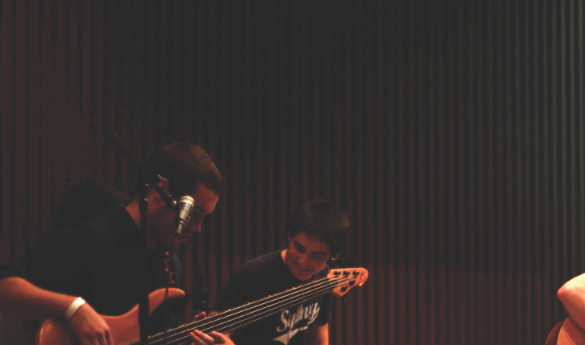Co-curricular learning model on the horizon

Mason’s University Life department is spearheading a new initiative to develop co-curricular learning as part of their five-year strategic plan.
While not a part of the regular curriculum, a co-curricular activity enhances and applies the knowledge learned in the classroom.
“The basis of co-curricular learning is saying that what happens outside the classroom holds just as much relevance as what happens inside, and vice versa,” said Amy Snyder, director of special projects for University Life. “It’s connected… what you’re learning in your classes, you’re applying it and practicing it, and so that’s a co-curricular experience. You get to cross the threshold from the classroom to experience outside the classroom, and that all complements your overall learning.”
According to Rose Pascarell, the vice president of University Life, co-curriculum involves student participation on campus.
The co-curricular model will offer four tracks, including global and multicultural proficiency, civic learning and community engagement, well-being and career-readiness.
Students will be able to pick a track to focus on to find out what activities or experiences outside the classroom would contribute to one of these tracks.
The four areas were picked based on which student competencies are gaining prominence in higher education and the professional sphere.
“When you think about career readiness, we’re in an area of time when there’s a lot of demand by employers for students to have certain competencies,” Pascarell said. “And with the world becoming more global, there is a lot of proficiency to be developed around diversity and multiculturalism.
With civic engagement, we see a decrease in it when students get to college, and we want to reverse that trend. And, finally, there’s a new movement on well-being, which focuses not only on traditional definitions of healthy, but also how to develop resilience.”
Snyder adds that literature review also played a big part in determining the four tracks.
“There were a number of us last year that spent a lot of time reading and learning and distilling and figuring out what are the best practices,” Snyder said. “What are the literature, the data and evidence and what makes sense for Mason and our students.”
Both Pascarell and Snyder say that they are exploring badging and other markers to add credential to co-curricular learning activities. It is currently unclear if and how these activities would show up on a transcript.
“There are a lot of different models around different schools on how it may or may not show up on an academic transcript. But to be able to demonstrate your co-curricular learning experience for whatever comes next for you is really important,” Snyder said. “So that you can be able to articulate not only what you got on your academic degree upon completion but also those experiences that you had outside of the classroom that contribute to your credentials, qualifications and ability to be successful.”
Snyder says that although the program is still a work in progress, there has been a growing interest in a co-curricular learning model for years.
“There have been a lot of conversations about it. Now we’re trying to figure out how to package it in a way so that students can easily say, ‘I’m interested in civic engagement’ or ‘I’ve done all of that but I didn’t realize that it contributes to the well-being track, and if I do X, Y and Z, I can get a well-being badge,’” Snyder said. “So we’re not quite at the point where we can say what those requirements are, but it’s to package it so that students can be able to articulate their learning and engagement in a way that’s useful to them as they navigate their Mason experience and consider what comes next.”
The final outcome of the first phase will be in January when each of the groups will produce their design for the co-curriculum. Phase II, which is slated to happen in February, will begin the implementation phase.
“We need to do the assessments, bring our external partnerships in, and we need to market and brand it. We need to be able to really give this thing some legs,” Snyder said.
While the program is still in Phase I, Pascarell said the goal is to have an initial launch by fall 2014.
“There are six groups currently working to develop this co-curriculum. They’ve done everything from identify the focus to develop learning outcomes, an inventory of programs that happen on campus, which ones to map these areas and which ones could map to these areas,” Pascarell said. “And what we don’t offer that we really should be offering.”
The groups, or committees, are comprised of University Life faculty and staff, students and non-University Life faculty and staff.
“We have representatives from a number of different units within University Life, and then we have external teams,” Snyder said. “I work with the civic learning and community engagement team, and we have Wendy Wagner and Patty Mathison on our team because they’re content experts. So we have some faculty and academic colleagues that we’ve invited onto these teams who are experts and partners.”
According to Snyder, since the co-curricular program is part of the five year-strategic plan, the current phases are part of the starting process.
“We’ve done some of the foundational part, now we’re just kind of getting our arms around the model to help create a co-curriculum, and call it that,” Snyder said. “Not just our University Life programs and services. We want to say here’s a co-curriculum that adds to the student experience and student success.”
